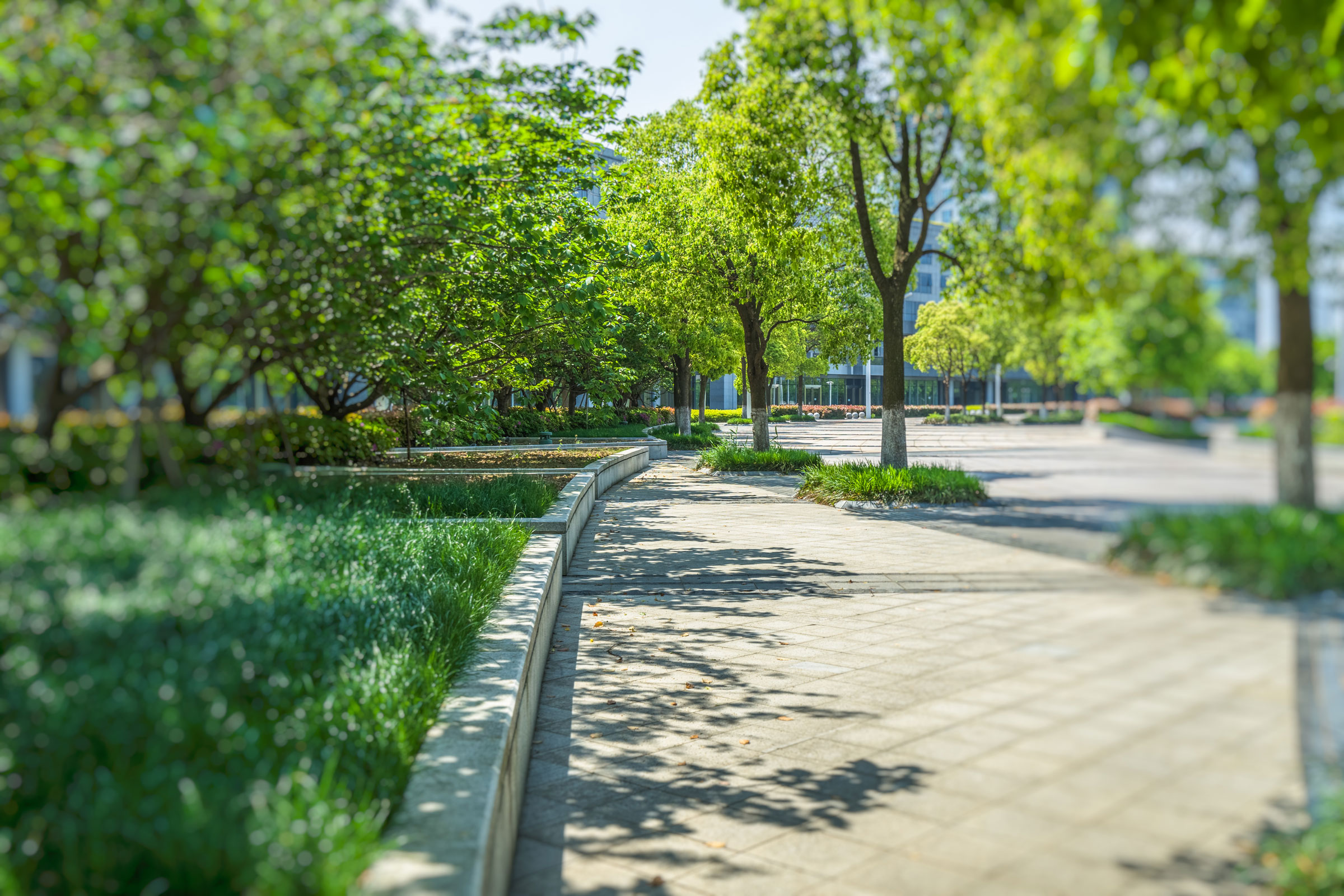
Stormwater runoff is a growing challenge in both urban and rural environments. As more land is covered by pavement, rooftops, and other impervious surfaces, rainwater has fewer places to soak into the ground. Instead, it rushes across hard surfaces, picking up pollutants like oil, fertilizers and sediment before entering storm drains and waterways. The result? Increased flooding, degraded water quality, and stressed infrastructure.
Fortunately, nature offers a powerful and cost-effective solution: trees. Trees act as natural stormwater managers, helping to intercept, absorb and filter rainfall before it becomes harmful runoff. Their leafy canopies slow the force of rain, allowing water to evaporate or gently seep into the soil. Their roots create pathways for water to infiltrate deep underground, recharging aquifers and stabilizing the surrounding earth.
According to the U.S. Environmental Protection Agency (EPA), a single mature deciduous tree can intercept up to 1,000 gallons of rainfall annually. Even more impressively, studies show that a mature oak tree can absorb more than 40,000 gallons of water per year. By integrating more trees into our landscapes, we can reduce flooding risks, protect our water sources, and create more resilient communities — naturally.
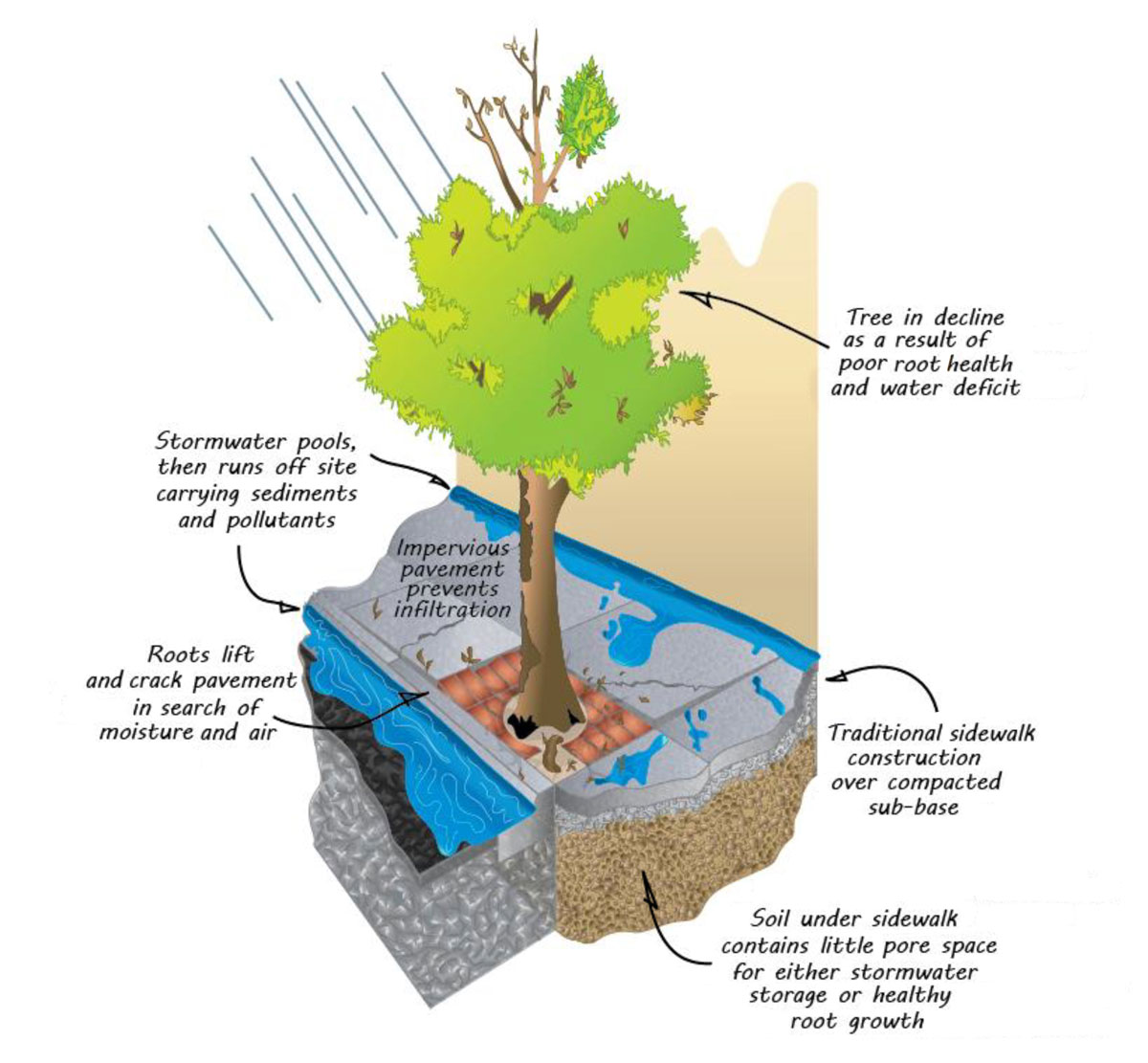
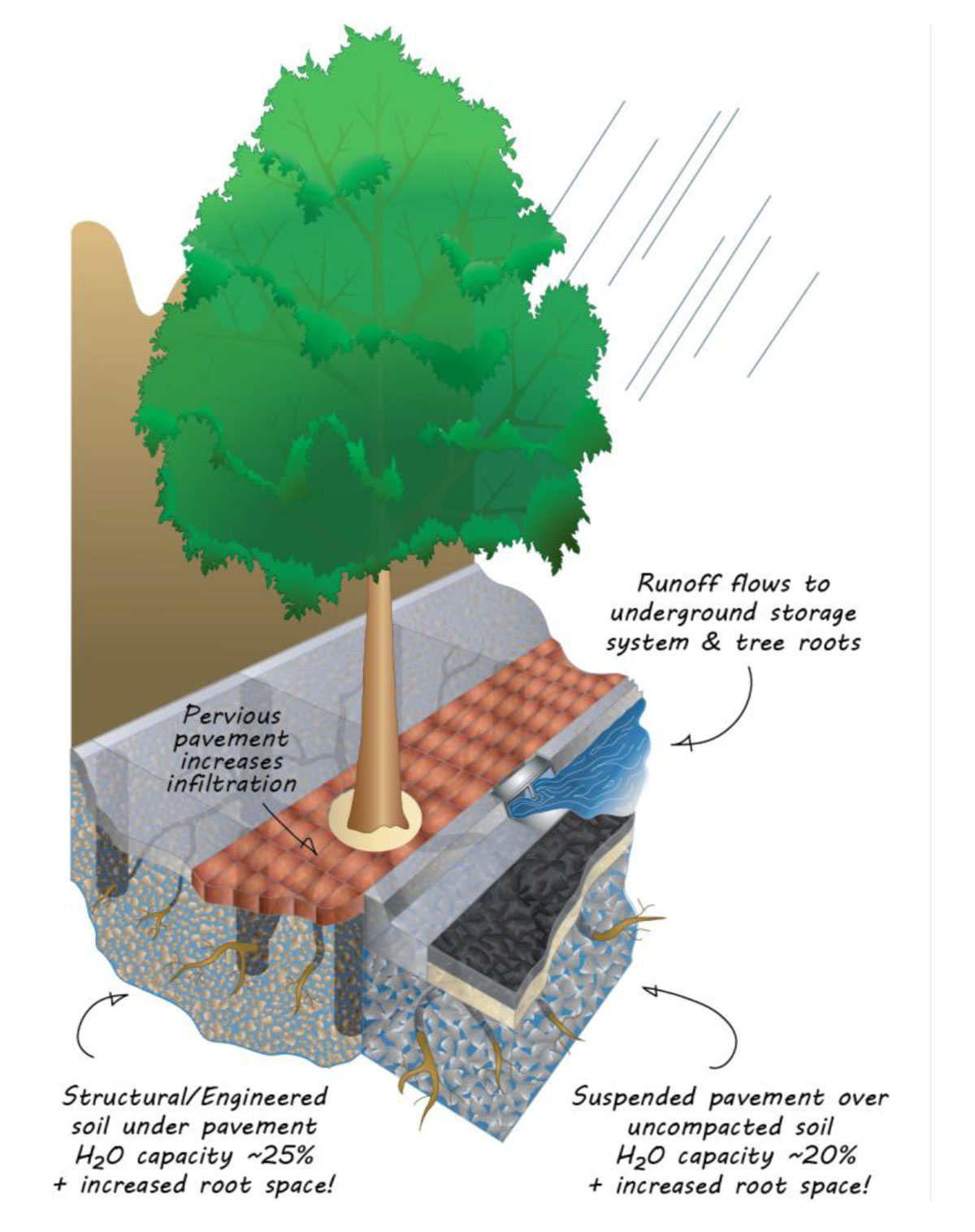
GRAPHICS COURTESY OF U.S. ENVIRONMENTAL PROTECTION AGENCY (EPA)
Reducing Runoff
When rain falls on natural landscapes, much of it is absorbed into the soil or filtered through vegetation. But in developed areas, rainwater often has nowhere to go. It runs rapidly off rooftops, streets and parking lots, overwhelming storm drains and carrying contaminants into rivers, lakes and oceans. This excess runoff contributes to flash flooding, streambank erosion, and pollution. The U.S. Geological Survey has shown that the loss of urban tree canopy directly increases stormwater volumes and worsens water quality. Cities with large areas of impervious surfaces are particularly vulnerable, especially during intense storms, which are becoming more frequent due to climate change.
A Natural Solution
Trees mitigate stormwater through a combination of physical structures and biological processes. One of the most immediate impacts comes from canopy interception. When rain falls, a tree’s branches and leaves act like a natural umbrella, catching and holding water before it hits the ground. This slows the velocity of rainfall, reduces soil compaction, and allows more time for water to evaporate or gently drip down — significantly easing the burden on stormwater systems during peak flows. Beneath the surface, tree roots absorb large amounts of water from the soil, helping to reduce the volume of runoff and delay its arrival at storm drains. Through the process of transpiration, this moisture is released back into the atmosphere, further diminishing excess water. Deep and widespread root systems act like natural sponges, particularly effective after heavy storms.
Additionally, tree roots stabilize the soil, helping prevent erosion that can clog waterways with sediment and degrade aquatic habitats. Tree-covered areas are far more resistant to washouts than exposed or mowed land. By holding soil in place, trees maintain the integrity of the landscape and protect downstream infrastructure.
Perhaps most importantly, trees play a vital role in enhancing groundwater recharge. Their roots create porous pathways in the soil, improving its structure and increasing infiltration. This means more rainwater is absorbed into the ground rather than running off the surface, helping to replenish aquifers and sustain base flows in streams and rivers during dry periods. According to Clemson Cooperative Extension, tree roots help loosen compacted soil, allowing stormwater to filter downward rather than run off the surface. They also support microbial activity and organic matter development, which further improves the soil’s ability to retain and manage water naturally.
Together, these natural functions make trees an essential component of any sustainable stormwater strategy — quietly working above and below ground to manage water where it falls.
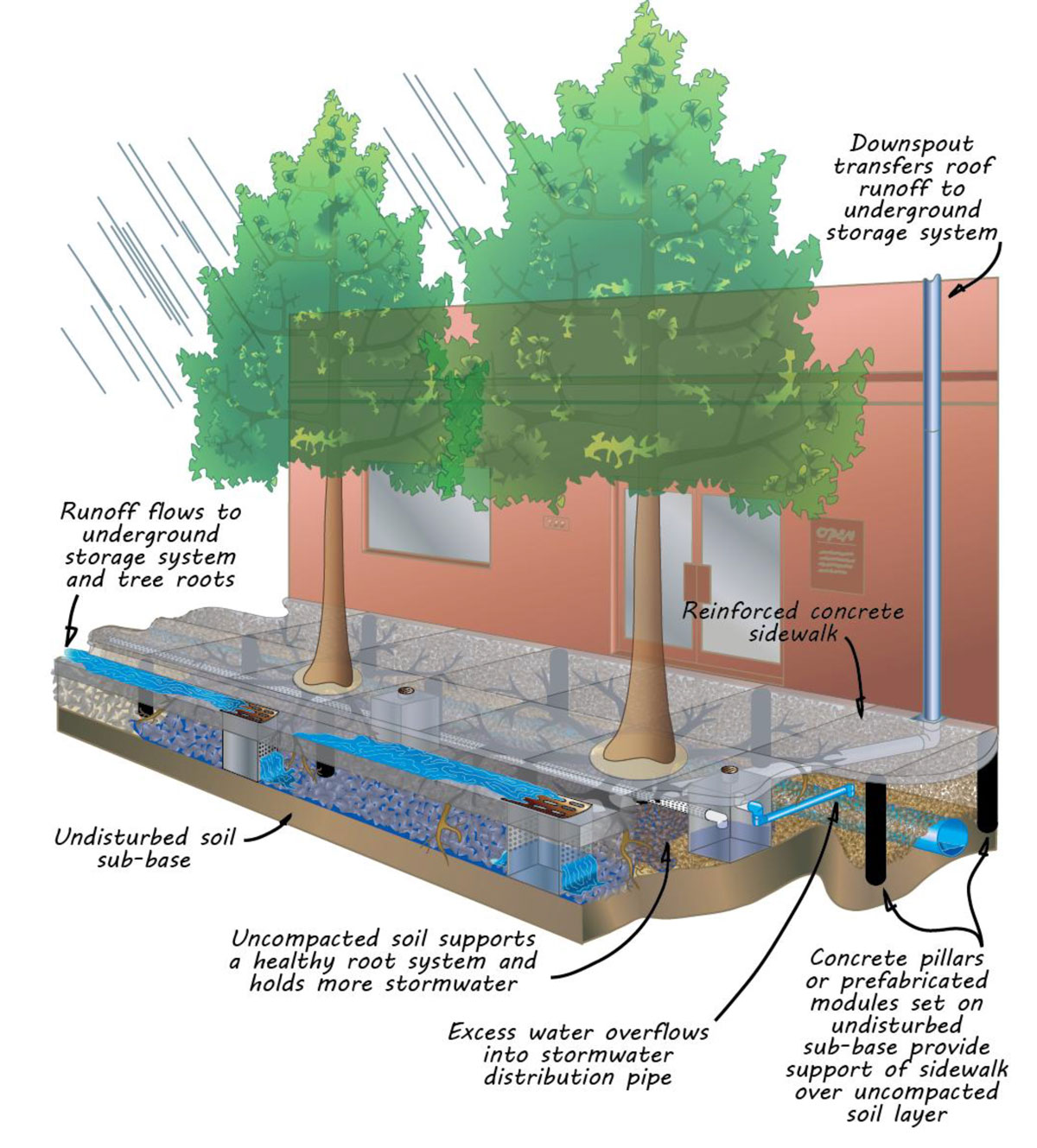
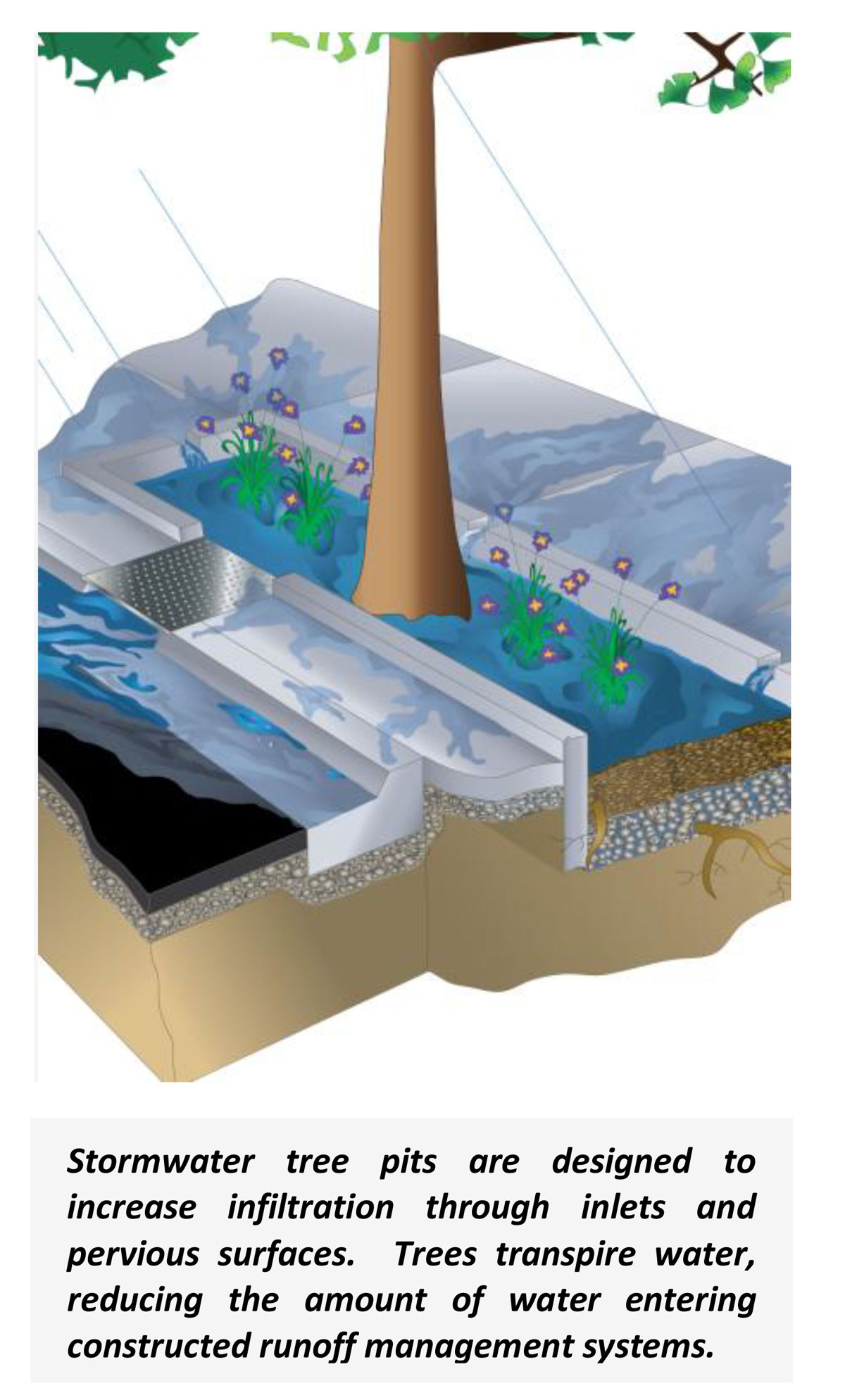
GRAPHICS COURTESY OF U.S. ENVIRONMENTAL PROTECTION AGENCY (EPA)
Case Studies
Cities and organizations across the country are increasingly recognizing the value of trees as stormwater infrastructure. In Portland, Oregon, the Bureau of Environmental Services has integrated urban forestry into its green infrastructure strategy. By planting trees along streets, in parks, and within bioswales, the city has successfully reduced stormwater runoff volumes while improving water quality in local watersheds. These efforts not only support compliance with Clean Water Act regulations but also enhance neighborhood livability.
In Minneapolis, the Minnesota Pollution
Control Agency has implemented engineered solutions such as tree trenches and tree boxes. These systems are designed to capture, slow, and treat stormwater through specially designed soils and root-friendly structures. Case studies show that these installations have reduced runoff volumes by more than 60% during major storm events, while also providing shade, wildlife habitat, and aesthetic value in urban neighborhoods.
Meanwhile, in the Chesapeake Bay region, the USDA Forest Service conducted a comprehensive study demonstrating that strategic tree planting can help municipalities meet regulatory stormwater goals. Some jurisdictions now award “stormwater credits” for tree canopy, allowing trees to be formally recognized as part of compliance plans. This shift in practice is supported by related empirical data showing that urban tree cover can significantly reduce runoff volumes.
These examples highlight the versatility and effectiveness of trees in a variety of settings—rural, suburban and urban — and underscore their role as a key component of resilient, cost-effective stormwater management.
Choosing the Right Trees
Selecting the right tree species is crucial. Native, deep-rooted canopies such as white oak (Quercus alba), sweetgum (Liquidambar styraciflua), bald cypress (Taxodium distichum), red maple (Acer rubrum), and river birch (Betula nigra) excel at managing stormwater. These trees are well-adapted to local environmental conditions and typically require less maintenance than non-native alternatives. Penn State Extension recommends these species for their strong water absorption, tolerance to wet conditions, and soil stabilization benefits — making them ideal for stormwater-prone areas.
Urban environments benefit from hardy, space-efficient species such as honey locust, eastern redbud, and serviceberry. Planting trees in engineered systems — like tree trenches or planters — also boosts infiltration and root health, as shown by treatments researched in ScienceDirect.
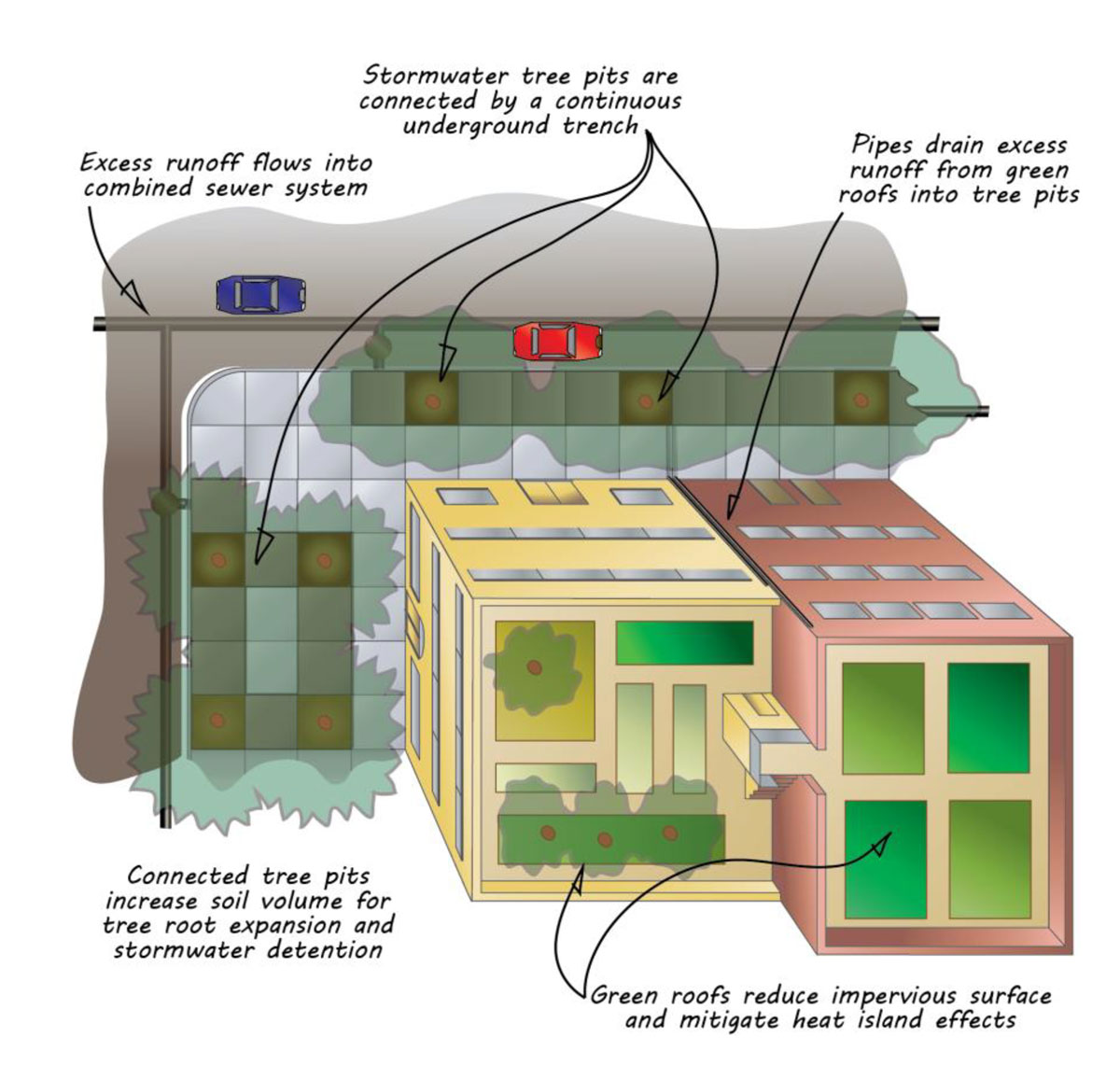
Some successful design considerations feature stormwater tree pits that treat runoff while supporting tree growth. While connected pits, permeable surfaces, and proper grading maximize infiltration. Species selection, expert design, and overflow planning are also key for effective streetscape retrofits.
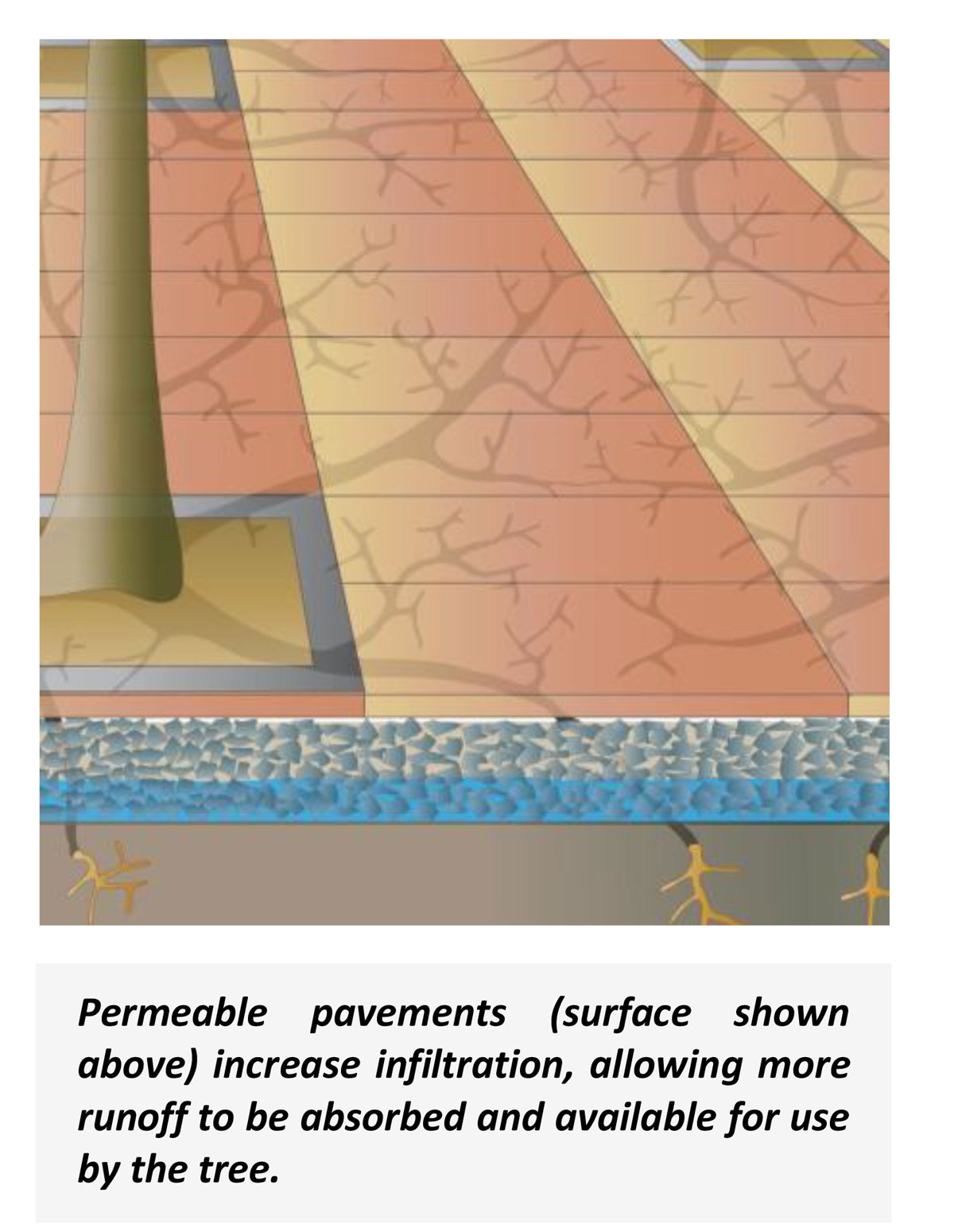
Permeable pavements allow water to infiltrate through surfaces into underground reservoirs, reducing runoff and supporting tree growth when paired with systems like structural soil and stormwater tree pits.
GRAPHICS COURTESY OF U.S. ENVIRONMENTAL PROTECTION AGENCY (EPA)
Where space allows — typically in rural or suburban settings — larger canopy trees planted along waterways or in open land provide maximum service in mitigating runoff and stabilizing soil.
Proper placement is essential: trees should be located near swales, bioswales, or stormwater inlets to maximize water capture, but they must also be set back 10 to 20 feet from buildings and underground utilities. These guidelines align with recommendations from the EPA Stormwater Trees Technical Memorandum, which outlines best practices for integrating trees into stormwater systems safely and effectively. Optimal planting seasons are fall and early spring. To give trees the best start, dig holes twice the width of the root ball, backfill with native soil, mulch adequately, and water regularly during the first few seasons.
For more guidance, visit treesaregood.org or consult your local cooperative extension office for site-specific recommendations.
Last modified: November 3, 2025

